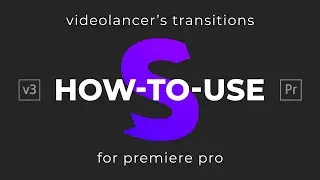Understanding the Options Dialog CADLearning Lesson
You can use controls in the Options dialog to configure various settings for your Revit installation.
To display the Options dialog, click the large R in the upper-left corner of the Revit window to display the Application Menu and then click Options.
The Options dialog includes a number of global settings for your Revit installation. You can click an option in the left pane to switch to a different page of related controls.
Start by looking at the General options. First, in the Notifications area, you can control the Save reminder interval and the Synchronize with Central reminder interval. Simply expand the adjacent drop-down to select an option.
Under Username, you can specify your username or click the link to Sign In to Autodesk 360. If you are signed into Autodesk 360, your Autodesk ID is used as your username. Your username is important when collaborating using worksharing.
Next, in the Journal File Cleanup area, you can specify when to clean up journal files. Revit will clean up journal files that are more than a certain number of days old once the number of journals exceeds a certain number. The default setting is to clean up journal files older than 10 days once the number of journals exceeds 10. However, you can enter any number between 2 and 999 for each option.
You can also control the Worksharing Update Frequency for workshared projects. This is how often Revit will update worksharing display modes. This can range from More Frequent, which is Every 5 seconds, to Less Frequent, which is Every 60 seconds. Or, if you move the slider all the way to the left, you will receive Manual updates only. Best practice is to keep the slider towards the More Frequent side.
The last General option is the Default view discipline under View Options. This setting specifies a default discipline for views where no default view template exists, or where a view template exists but no view discipline has been specified.
In the User Interface options, there are two areas: Configure and Tab Switching Behavior. Under Configure, you can control the Tools and analyses that are available in the user interface by selecting or deselecting a checkbox. This option is only available for the full version of Revit. If you are using one of the vertical versions of Revit, you will not see the Tools and analyses options.
Continuing on, you can set the Active theme, which can be Light or Dark, Customize Keyboard Shortcuts, Customize Double-click Options, and control the Tooltip assistance, which can be set to None, Minimal, Normal or High. Then you can select whether or not to enable the Recent Files page when Revit opens.
In the Tab Switching Behavior area, you can control what happens after you clear a selection or exit the Project Environment and Family Editor. You can choose to Return to the previous tab or Stay on the Modify tab. Return to the previous tab is the default behavior for the Project Environment while Stay on the Modify tab is the default for the Family Editor. So be aware that you can change that here. You can also choose whether or not to Display the contextual tab on selection. It's a good idea to leave this option selected.
Switch to the Graphics options. Here in the Warnings area, you may see a message stating Unknown video card. This simply means that Autodesk has not tested the video card in your system with Revit. It also states that you can continue to use Hardware Acceleration, but you should turn it off if you experience graphics display issues.
Under Graphics Mode, you can select whether or not to Use Hardware Acceleration, Use Optimized View Navigation, or Smooth lines with anti-aliasing. If you enable Smooth lines with anti-aliasing, then there are two options pertaining to the Graphic Display Options dialog. You can choose for each view to be controlled separately with the Graphic Display Options dialog, or you can choose to have the Graphic Display Options dialog control every view in the project.
In the Colors area, you can choose to invert the background color. This changes the background from white to black. Then you can control the color for elements that are selected, pre-selected (in other words, elements that you hover the cursor over), and elements that are selected when a warning or error occurs. Simply click the adjacent button to open the Color dialog to change the color. Additionally, for selected elements, you can choose whether or not they are Semi-transparent.
Under Temporary Dimension Text Appearance, you can set the Size and Background. The Size can range from 8 to 20 and the







